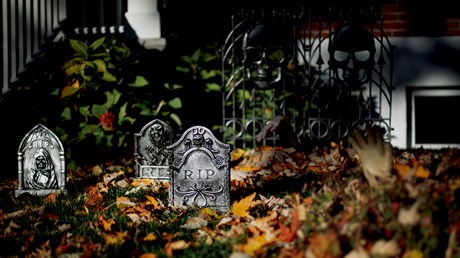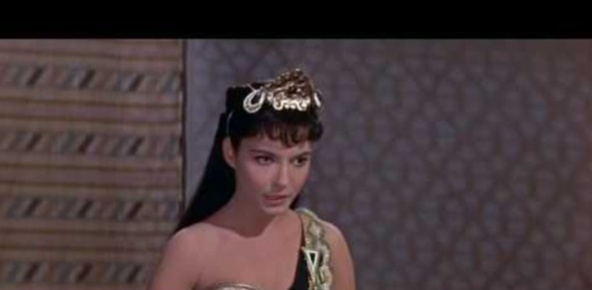When our Halloween celebrations domesticate evil, we often miss a chance to see true darkness through the light of Christ.

Last October, my three-year-old developed an attachment to our neighbors’ Halloween décor. On our frequent walks to visit the enormous inflatable cat, I fielded questions about other yard displays. When we passed a house featuring plastic tombstones with corpses climbing out of the ground, I wasn’t sure how to answer the question “Mom, what does that mean?”
Another mother recently shared on Twitter that her neighbors have erected an eight-foot-tall zombie skeleton dangling a terrified child figurine upside down by his foot. She asked, “How scary is too scary for Halloween yard decorations?”
It’s a question I share. But behind it is another important question for Christians to ask: Why are so many people so fascinated with evil and death?
Americans spend 10 billion dollars annually on Halloween. In a culture that usually ignores death and dismisses the supernatural, the holiday stands out as a pressure release. Once a year, we express our repressed need to talk about these things.
As evidenced by a recent New York Times article titled “How to Live with a Ghost,” our annual obsession with the undead, the paranormal, and the macabre reveals our increasing curiosity about dying and our belief in evil. By reducing these mysteries to yard décor and costumes, we seek to domesticate and control our fears. Even the most garish Halloween rituals can be understood as religious—an attempt to answer the questions that haunt us.
But domesticating darkness is a false solution for believers and unbelievers alike.
“There are two equal and opposite errors into which our race can fall about the devils,” wrote C. S. Lewis in his preface ...
from Christianity Today Magazine
Umn ministry




.gif)

.gif)
.gif)
